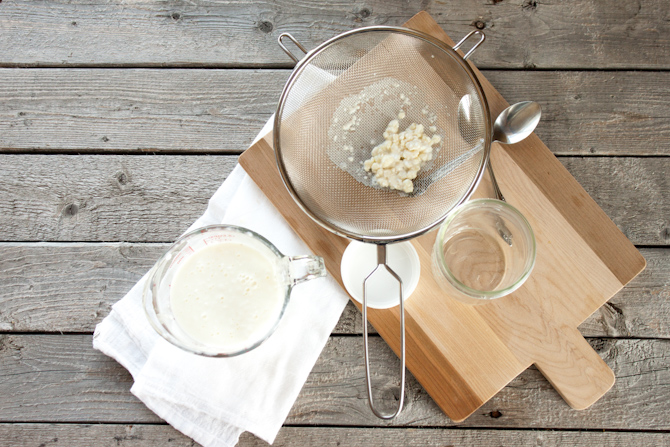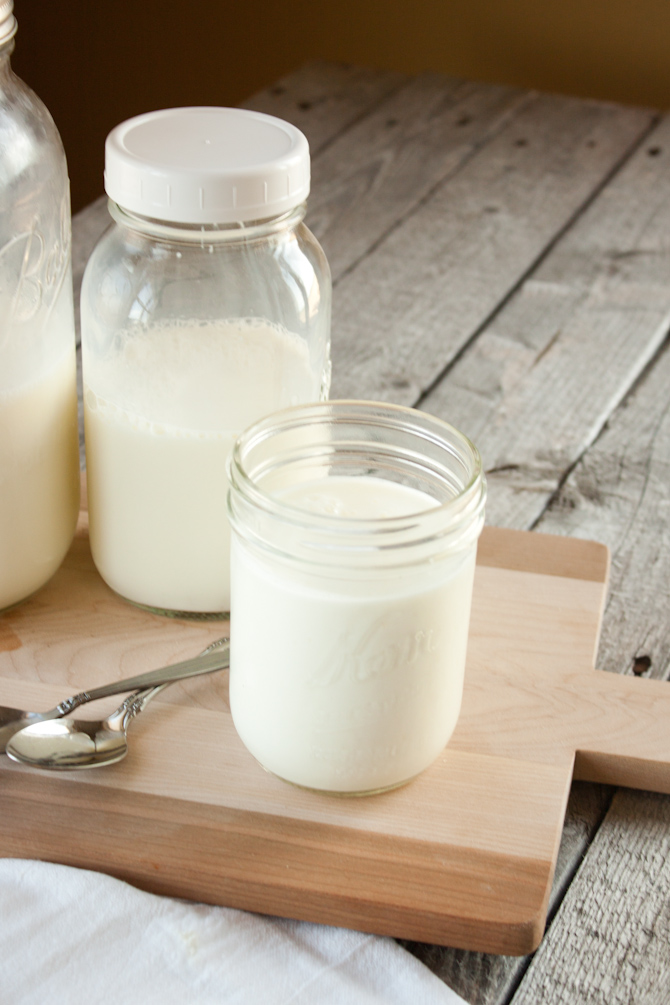
I received my kefir grains. WHEE! I am seriously thrilled for this new nerdy food concoction. I would like to think everyone is excited as I am in making their own kefir, yogurt, kombucha or whatever other health food you are brewing up at home. There is just something about making it yourself that makes it so much fun. Let’s be honest, it is more economical as you can continue to make batch after batch with these grains. They only die if you kill them, otherwise they will probably reproduce and live on forever. Plus, they are natural and have tons of health benefits. No added ingredients, fillers or additives. Even better right?

There are multiple methods based off the amount of time you want it to ferment, the warmer, the faster it happens, the cooler, the longer it takes. I keep mine on the counter for quick fermentation and I put it in the refrigerator to slow it down when I have plenty. When you receive your kefir grains, add to organic whole milk (preferably raw milk). It is my understanding that the grains will maintain themselves in organic milk but will not grow. They only way you can get them to multiply and grow is in raw milk because it needs the good bacteria (which is killed during the pasteurization process) for the grains to grow. Regardless, organic whole milk will make you some darn good kefir.
Need ideas on what to do with your new found drink of choice?
- Add it to smoothies
- Make kefir popsicles – coming soon!
- Just drink it
Remember, homemade kefir is unsweetened. Therefore it is not going to taste like store bought kefir. If you can’t drink it plain, add some fresh fruit and a bit of honey, blend and enjoy.
Now to the process.
- Kefir Grains
- Pint Whole Organic Milk or Raw Milk
- Pint Canning Jar or equivalent glass container
- Place Milk in glass container of your choice
- Add your kefir grains to the milk
- Place a cloth or lid loosely on top allowing some air movement as the kefir needs to breathe (it is living, don't suffocate it)
- Let it sit out on the counter away from direct sunlight for 8-12 hours depending on the temperature of your house. The warmer, the less time it will take.
- Leave it out until desired ripeness and then strain the kefir into a separate jar using a mesh strainer.
- The kefir can now be closed up and placed in the refrigerator until use.
- With the grains, add them to new milk and continue the process.
- If you would like to slow it down place the grains and milk in the refrigerator which will take 7-10 days to ferment or you can even freeze the grains to be used at a much later date.

